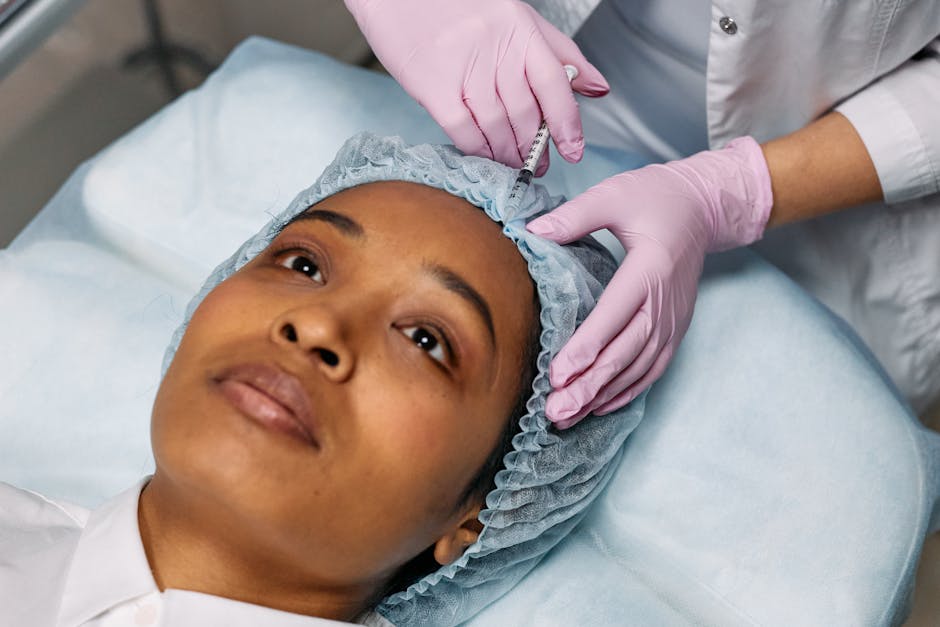Exploring the Different Areas for Botox Treatment on the Face
Botox has revolutionized the world of cosmetic treatments, offering a quick and effective way to reduce the appearance of wrinkles and fine lines. With millions of procedures performed each year, Botox is a go-to solution for many seeking a more youthful appearance. But did you know that Botox can be applied to various areas of the face, each offering unique benefits? In this comprehensive guide, we will explore the different areas for Botox treatment on the face, provide useful insights, and share actionable tips to help you make informed decisions.
The Popularity of Botox
Botox, scientifically known as Botulinum toxin, is a neurotoxic protein that temporarily paralyzes muscles. This property makes it an effective treatment for wrinkles that form due to facial expressions. According to the American Society of Plastic Surgeons, over 7.5 million Botox procedures were performed in the United States alone in 2020, highlighting its popularity and effectiveness. The non-surgical nature of Botox, along with minimal downtime, has made it a favorite choice for cosmetic enhancement.
Understanding Facial Anatomy for Botox
Before delving into the specific areas for Botox treatment, it’s important to understand the basic anatomy of the face. The face is comprised of a complex network of muscles, each responsible for different expressions. Over time, repetitive movements can lead to the formation of dynamic wrinkles. Botox works by relaxing these muscles, smoothing out the overlying skin and reducing the appearance of wrinkles.
Forehead Lines
The forehead is one of the most common areas for Botox treatment. Horizontal lines across the forehead, often called “worry lines,” form due to raising the eyebrows. Botox injections can effectively relax the frontalis muscle, reducing the appearance of these lines and offering a smoother forehead.
Frown Lines (Glabellar Lines)
Frown lines, or glabellar lines, are the vertical lines that form between the eyebrows due to frowning or squinting. These lines can give the appearance of a stern or angry expression. Botox can be injected into the corrugator and procerus muscles to soften these lines and create a more relaxed facial expression.
Crow’s Feet
Crow’s feet are the fine lines that radiate from the outer corners of the eyes. They are often caused by smiling or squinting. Botox can be effectively used to relax the orbicularis oculi muscle, reducing the appearance of crow’s feet and creating a more youthful look.
Bunny Lines
Bunny lines are the diagonal lines that appear on the side of the nose when you scrunch it. While they may be less common, some individuals find them bothersome. Botox can smooth out these lines by targeting the nasalis muscle.
Lip Lines and Lip Flip
Lip lines, also known as smoker’s lines, are the vertical wrinkles that appear above the upper lip. Botox can be used to relax the muscles around the mouth, softening these lines. Additionally, a lip flip technique can be employed, where Botox is injected into the upper lip to create a subtle pout without adding volume.
Chin Dimpling
Chin dimpling, also known as “pebble chin,” occurs due to repeated contraction of the mentalis muscle. Botox can help smooth out the chin area, providing a more even texture.
Jawline Slimming and TMJ Relief
Botox is not only used for cosmetic purposes but also for medical conditions. It can be injected into the masseter muscles to slim the jawline for those with a square jaw or to relieve symptoms of temporomandibular joint (TMJ) disorders, such as jaw tension and pain.
Statistics and Success Rates
Research indicates high satisfaction rates among Botox users. According to a study published in the Journal of Cosmetic Dermatology, over 90% of participants reported satisfaction with their Botox treatment’s cosmetic results. The procedure’s effectiveness, combined with the minimally invasive nature, contributes to its widespread appeal.
Actionable Tips for Botox Treatment
Considering Botox? Here are some actionable tips to ensure a successful experience:
- Consult a Certified Professional: Always seek treatment from a qualified and certified practitioner to ensure safety and effectiveness.
- Understand Your Goals: Clearly communicate your cosmetic goals with your practitioner to tailor the treatment to your needs.
- Start with a Conservative Approach: If it’s your first time, consider starting with a smaller dose. You can always add more in subsequent sessions.
- Follow Post-Treatment Care Instructions: Adhere to any post-treatment instructions provided by your practitioner to maximize results and minimize side effects.
Potential Side Effects
While Botox is generally safe, some individuals may experience temporary side effects such as bruising, swelling, or mild discomfort at the injection site. Rarely, more serious complications can occur, so it’s essential to discuss any concerns with your healthcare provider before proceeding.
Conclusion
Botox offers a versatile and effective solution for addressing various facial concerns, from wrinkles to jaw tension. By understanding the different areas for Botox treatment and consulting with a qualified professional, you can achieve a refreshed and youthful appearance. Remember, Botox is a temporary solution, and regular maintenance sessions may be required to sustain the desired effects. Whether you’re looking to soften forehead lines, reduce crow’s feet, or achieve a slimmer jawline, Botox can be a valuable addition to your cosmetic regimen.
Are you considering Botox treatment? Share your thoughts and experiences in the comments below!

